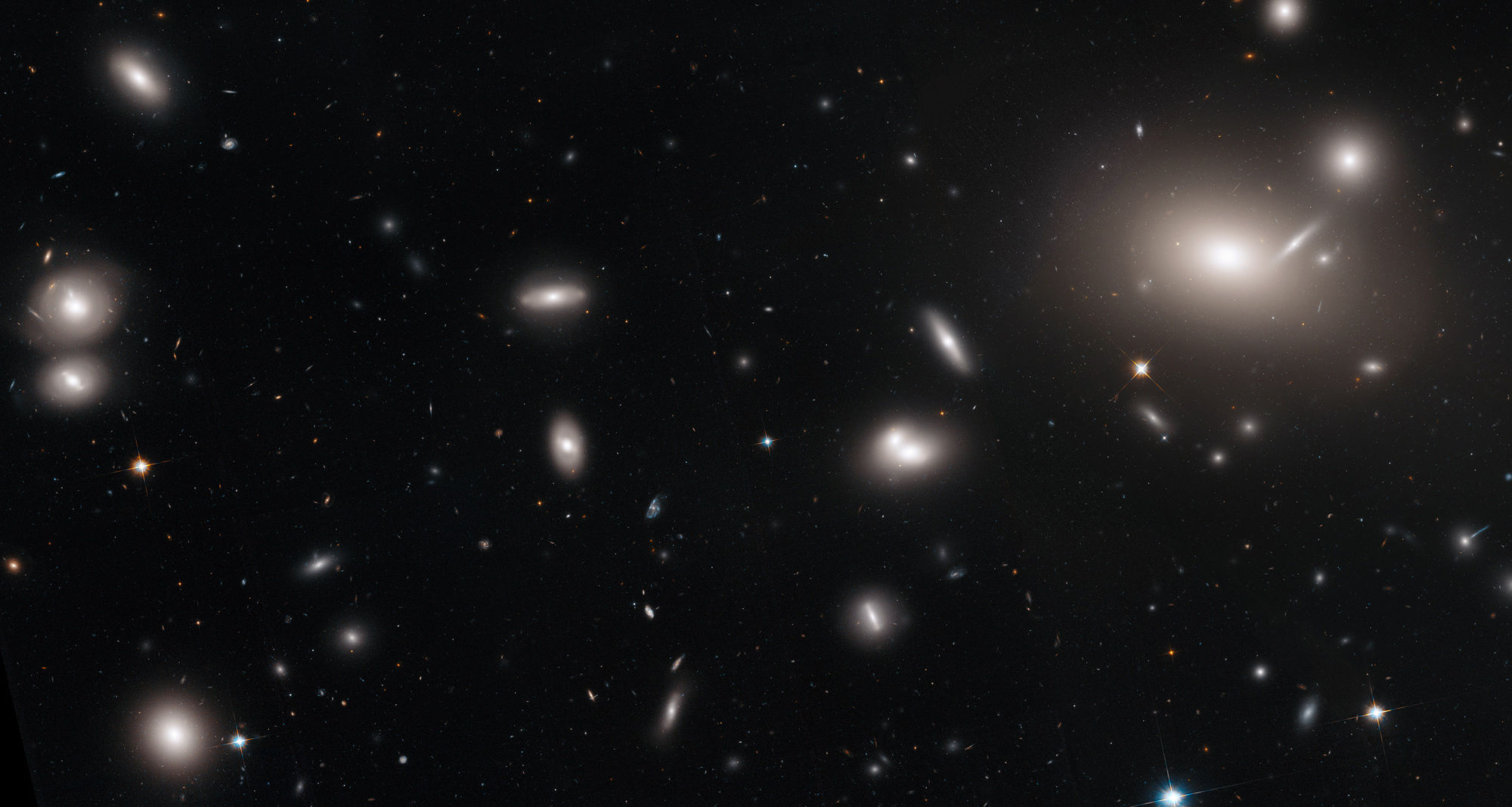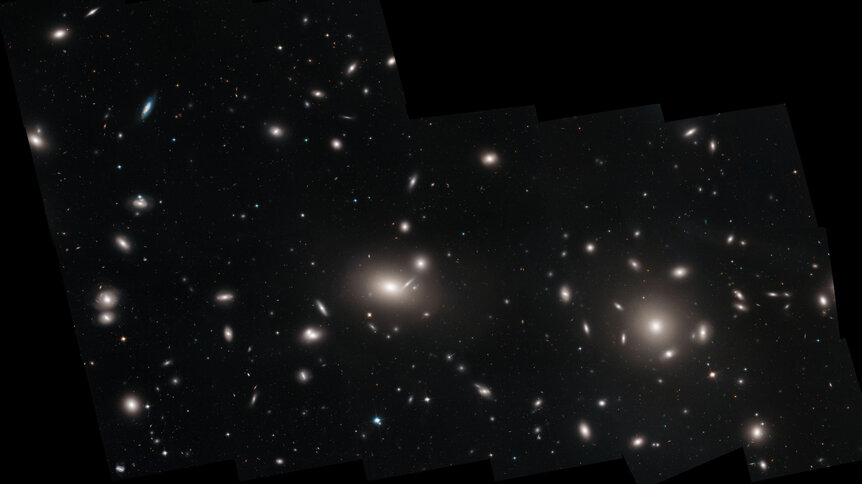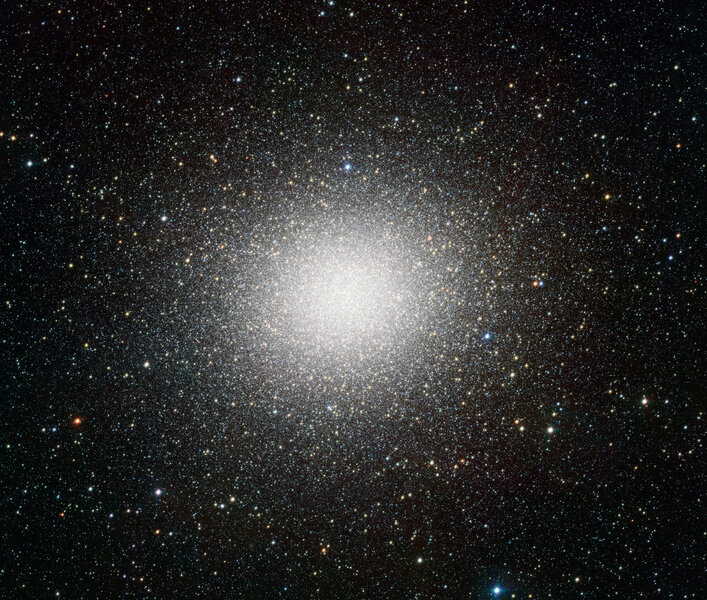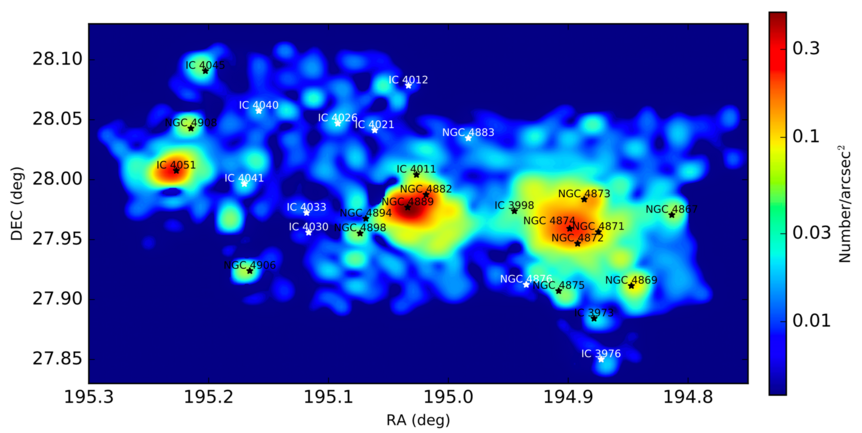Create a free profile to get unlimited access to exclusive videos, sweepstakes, and more!
A cluster of clusters: The globulars of Coma

Big fleas have little fleas upon their backs to bite 'em,
And little fleas have lesser fleas, and so. ad infinitum.
And the great fleas, themselves, in turn, have greater fleas to go on;
While these again have greater still, and greater still, and so on.
One of my favorite things to know in astronomy is that some of the biggest structures in the Universe are made of some of the littlest.
The big structures I’m talking about here are galaxy clusters, vast collections of hundreds of galaxies or more, where each galaxy is a collection of billions of stars, huge volumes of gas and dust, and quite a bit of dark matter.
The structure I’m thinking of specifically is the Coma Cluster, so named because it resides in a part of the sky designated by the constellation Coma Berenices (which means “Berenice’s hair” in Latin). It’s a mammoth thing, a vast sprawling collection of well over a thousand galaxies all moving about, held together in the cluster by their mutual gravity. It has a total mass of a staggering 700 trillion times the mass of the Sun, and our view of it is pretty good even from over 300 million light years away.
And I can prove. Well, with the help of Hubble Space Telescope:
Yowza! Look at all those galaxies! And this isn’t the full extent of the cluster; it’s really just the central region. The detail is overwhelming, especially if you grab the full resolution 28,750 x 16,550 pixel 620Mb PNG of it. It’s total worth destroying your bandwidth for a while to get it.
Nearly everything you see in that image is a galaxy; the cluster happens to lie nearly straight up in a galactic sense in terms of the disk of our galaxy, so the number of stars you see in the Milky Way here is minimized.
Here’s the thing, though: Hidden in that image are lots of very tiny dots. You can barely see them, but they’re there. These are globular clusters. These are like galaxy clusters but instead of being collections of galaxies they’re far smaller collections of stars, from tens of thousands up to a million or two. They’re highly concentrated and roughly spherical (hence the name), looking like sparkly beehives in space.
If you see one up close they look like this:
Yeah. They’re one of my favorite targets when I’m out with my own ‘scope. The Milky Way has about 150 of these orbiting it, generally out a few tens of thousands of light years, roughly the same distance as the size of the galaxy itself.
We see them around lots of galaxies, so it makes sense the Coma Cluster galaxies have them too. They’re tough to spot from 300 million light years, but Hubble is up to the task.
It’s worthwhile doing this. When we look at that cluster we can see the galaxies and get an idea of how they’re interacting, but the view is limited. In other clusters (like Virgo and Fornax) deep surveys have shown that when you look at the faintest light from a cluster it gives you a better idea of how those galaxies are behaving. When two pass each other they interact gravitationally, creating all kinds of havoc, which can be seen in the very faint gas in the cluster, or stars ejected from the galaxies. It’s possible that the globular clusters may give us clues on how that happened.
A team of astronomers decided to take a look. They started with the Advanced Camera for Surveys (ACS) Coma Cluster Treasury Survey, which was set up specifically to map the cluster. Unfortunately ACS shorted out before the survey was complete (though it was later fixed by astronauts in orbit), so the astronomers used archived images taken for other projects to fill in the gaps.
They then wrote software to pick out just the globulars. There are roughly 100,000 individual objects in the image (!!!), and they taught the computer to look for things that were small (but not as small as stars), about the right brightness, and the right color to be globular clusters.
They found 22,426 candidate globulars.
Holy cow. OK, fair enough; I’ve written software like that before, and it’s difficult but you can tweak it to work pretty well. The problem is knowing how well. Is it finding extremely distant background galaxies and thinking they’re globulars?
Well, I was wondering about that when I came across this in the research paper:
Through detailed visual analysis of the properties of the candidates we produced a final list of globular cluster that is virtually free of contaminants such as background galaxies and artifacts. We stress that all globular clusters in the final list of candidates were validated through visual inspection by displaying the detections on the screen and scanning them on each image, and in both filters.
Um. If I’m reading that correctly, they checked every single candidate by eye. Whoa.
At this point I’ll also note that the team consisted of quite a few undergraduate students who didn’t necessarily have much experience in astronomical research. But it’s easy, even for a beginner, to be taught how to recognize certain things in data — humans are eerily good at pattern recognition — and are in general better at it even than sophisticated software. And they get their names on a paper! Pretty good deal. Even if it means examining over 22,000 points of light.
So what did they find? Ah, yes, this gets really interesting.
When they mapped out the location of the globulars, they found three major concentrations, around three of the biggest, brightest galaxies in the cluster: NGC 4874, 4889, and IC 4051. You might expect that, but when you look closer things aren’t quite as expected.
For one thing, the halo of globulars around each galaxy goes out much farther than it does for the Milky Way, as much as 5-6 times the physical size of the galaxy itself. Also, the number of globulars around those three galaxies is 10–30 times denser than around other galaxies in the cluster! Clearly these galaxies are hogging them.
Well, kinda. Some of the galaxies are clearly sharing globulars between them. And look at the two biggest concentrations: There’s a little bridge between them, too. It looks like there have been multiple interactions between galaxies, where bigger ones have stolen the globulars from others. You can also see regions in the cluster where there are very few globulars, likely the scene of some of those crimes.
There’s more. Some globulars have slightly bluer stars in them then others, which are redder. It turns out that redder globulars are more highly concentrated around galaxies, while blue ones are more spread out.
The thinking is that bluer ones are likely made in smaller, dwarf galaxies, while redder ones are made as part of the bigger galaxies themselves. The latter steals them from the former, so they tend to lie in the outskirts of these galaxies, while the homegrown redder clusters huddle closer in.
So just by looking at the location and colors of those globulars, we can learn about the history of this ridiculously huge city of galaxies.
And speaking of history, it occurs to me: When the light you see here left those galaxies, dinosaurs had yet to evolve on Earth, and untold countless numbers of plants died and later formed a layer in the Earth that we now (though hopefully for not too much longer) mine for coal.
I love thinking on scales like these. Deep space, deep time, deep learning… plus gorgeous images of some of nature’s most beautiful objects. Everything a brain could want.





























